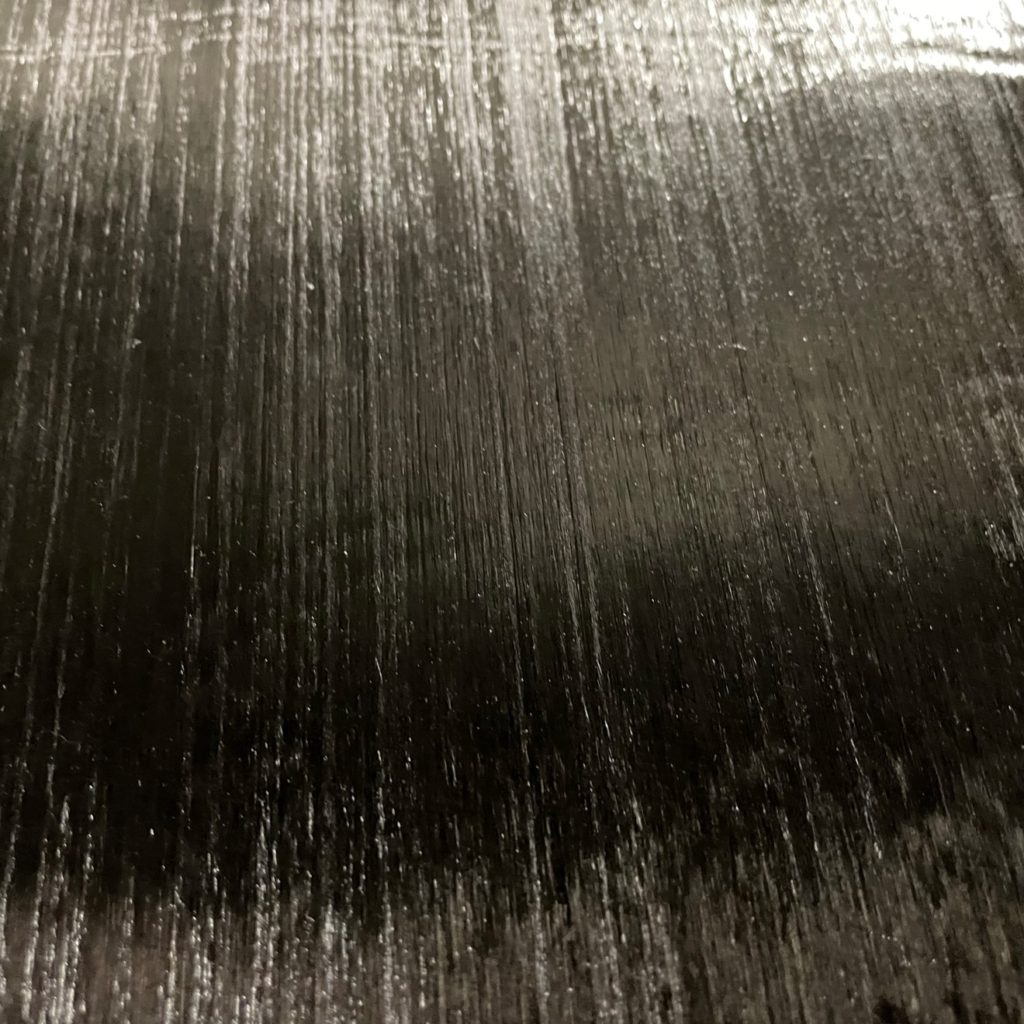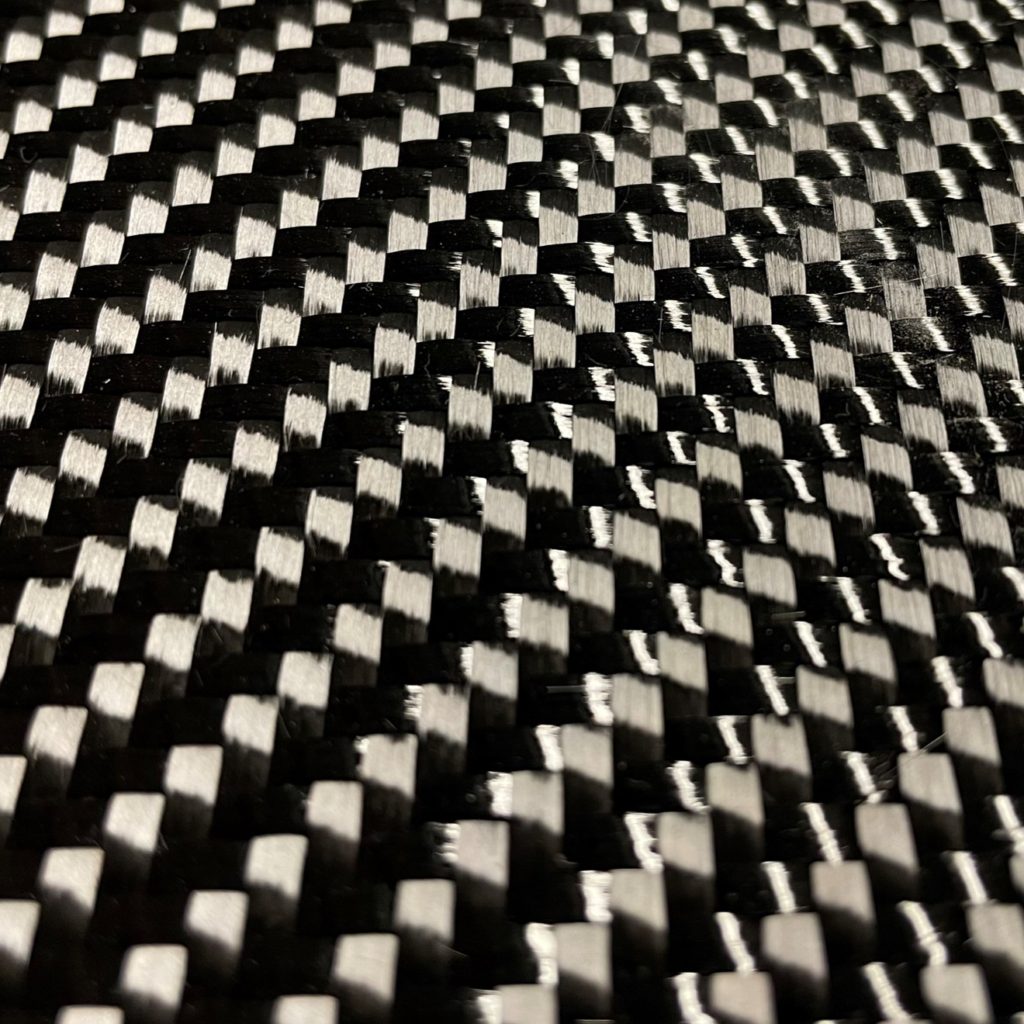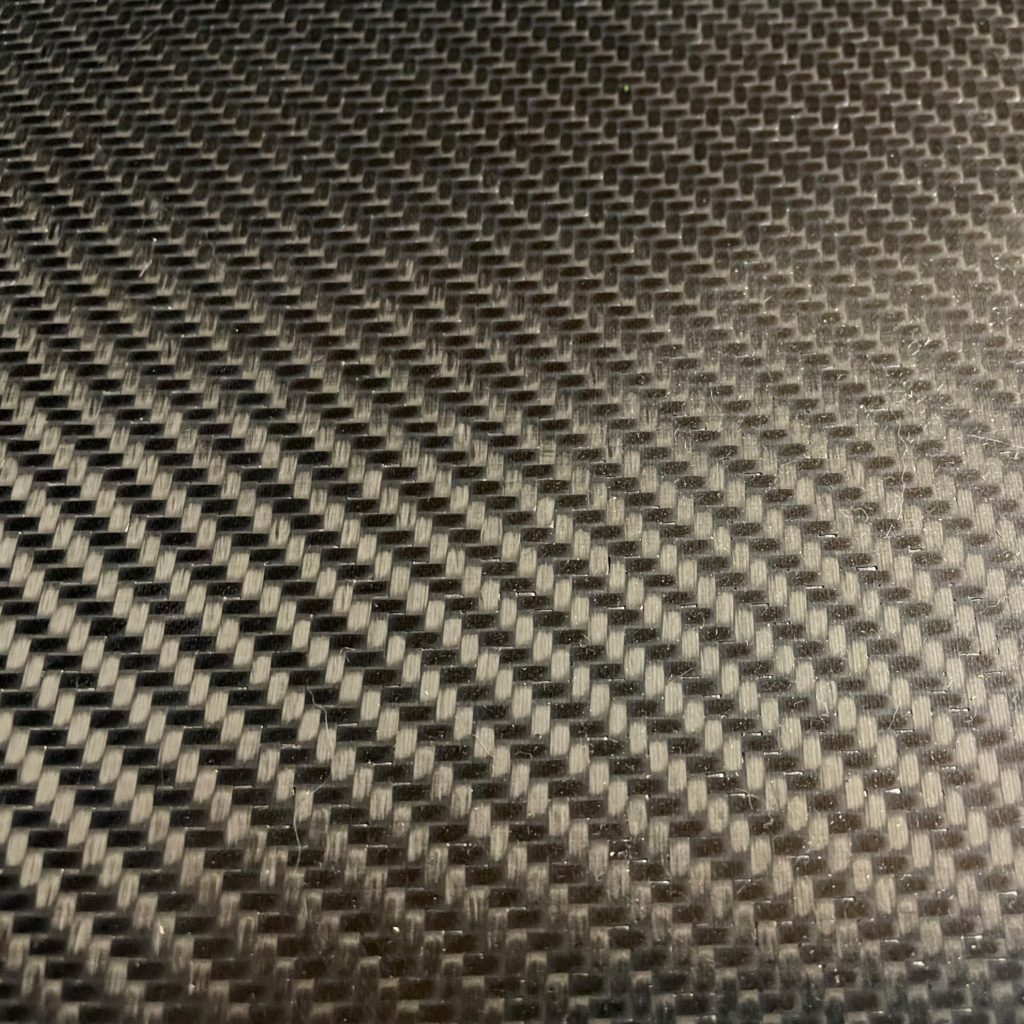Uni-directional and Woven Carbon Fiber
Uni-directional and Woven Carbon Fiber
There are two primary options when building a carbon fiber composite laminate: uni-directional and woven plies. There are pros and cons to both options, and often they are mixed together to yield a part that takes some of the benefits of each.
Uni-directional has all of the fibers oriented in the same direction. This material can be used in both prepreg and non-prepreg forms. In a prepreg form, uni-directional typically comes on a roll with no other binding and stabilization materials. It is both straight and “clean” in the sense that there are no orthogonal fibers. The resin ratio is usually low for uni-directional prepreg, yielding a high stiffness and strength to weight. Uni-directional can also be used in a dry form, and then formed into a part using a wet layup, vacuum bag, or resin infusion process. Dry uni-directional usually requires binding fibers that run perpendicular to the direction of the carbon fiber, and thus introduce other variables into the laminate. In applications such as x-ray imaging, where homogeneity and radiolucency are the primary goal, uni-directional prepreg is often the best choice.
Uni-directional plies can be laid down in multiple directions to achieve balanced mechanical properties, or the plies be can oriented with a greater percentage along a single axis, thus creating a part with different stiffness and strength along different axes. For example, a typical uni-directional standard modulus carbon fiber part with all of the fibers in a single axis (pultrusion is a good example of this) can have a modulus of elasticity along the direction of the fibers of about 16-18msi. In the orthogonal direction, however, the modulus will only be about 1.5msi. By orienting uni-directional prepreg fibers in both the 0 and 90 deg directions, the final laminate will have a modulus of about 8-9 msi. In addition, there are an infinite number of options between these two, for example, one could orient the fibers in a ratio of 75%/25% along the 0 and 90 deg directions, or even put fibers off-axis along the 45 deg axes to improve torsional stiffness.
Another option is to use a woven fabric to create carbon fiber sheets, angles, tubes, or molded parts. A woven material is usually created by weaving carbon fiber tows in two orthogonal directions, for example 0/90 or +/- 45 deg fabric. Other weaves are possible, however. One popular weave pattern is 0/+60/-60, which offers more balanced mechanical properties along all intermediary axes. A material that has fibers oriented in two directions in called biaxial, whereas a material with fibers additionally in two or more off-axis directions is called quasi-isotropic.
Generally speaking, carbon fiber composites are orthotropic, which means that the material properties are different along the three primary axes (i.e. x, y, and z directions). Most homogeneous engineering materials, for example metals, plastics, etc) have mechanical properties that are equal in all directions. These are called isotropic materials. By contrast, due to the fiber reinforced matrix composition of a carbon fiber part, even if fibers are placed in multiple directions, the mechanical properties are never equal along all axes. In this case, the composite is called quasi-isotropic, since the material may approach isotropy, but not be fully isotropic. When designing carbon fiber parts there is a balance struck between laminate isotropy and layup complexity, which usually results in greater material waste and cost.
Woven carbon fiber has several advantages and tradeoffs with uni-directional. For example, compressive strength is sometimes reduced in parts comprising only woven carbon fiber, since a portion of the fibers are in the z-axis (and crimped around one another). Damage tolerance, though, is often improved through the use of woven materials compared with uni-directional, particularly due to impact forces, stresses around holes, and tolerance to crack growth. As a result, it is common to design parts that utilize both uni-directional and woven carbon fiber. The uni-directional is used to tailor the mechanical properties and generate the highest tensile, compressive, and bending stiffness and strength possible. The woven plies, often placed on the outside of the laminate, improve machinability and damage tolerance.
Kumair has access to dozens of composite material options, and works with customers to determine the best approach to meet the project requirements and goals. Whether your application requires complex molding and assembly or needs to meet high temperature or flame retardant requirements, we can help. Click HERE to learn more, then call or email us to discuss your current needs. All manufacturing, including CNC machining, is performed in the United States by US citizens, so you will get quick turnaround, prompt service, and excellent quality.



